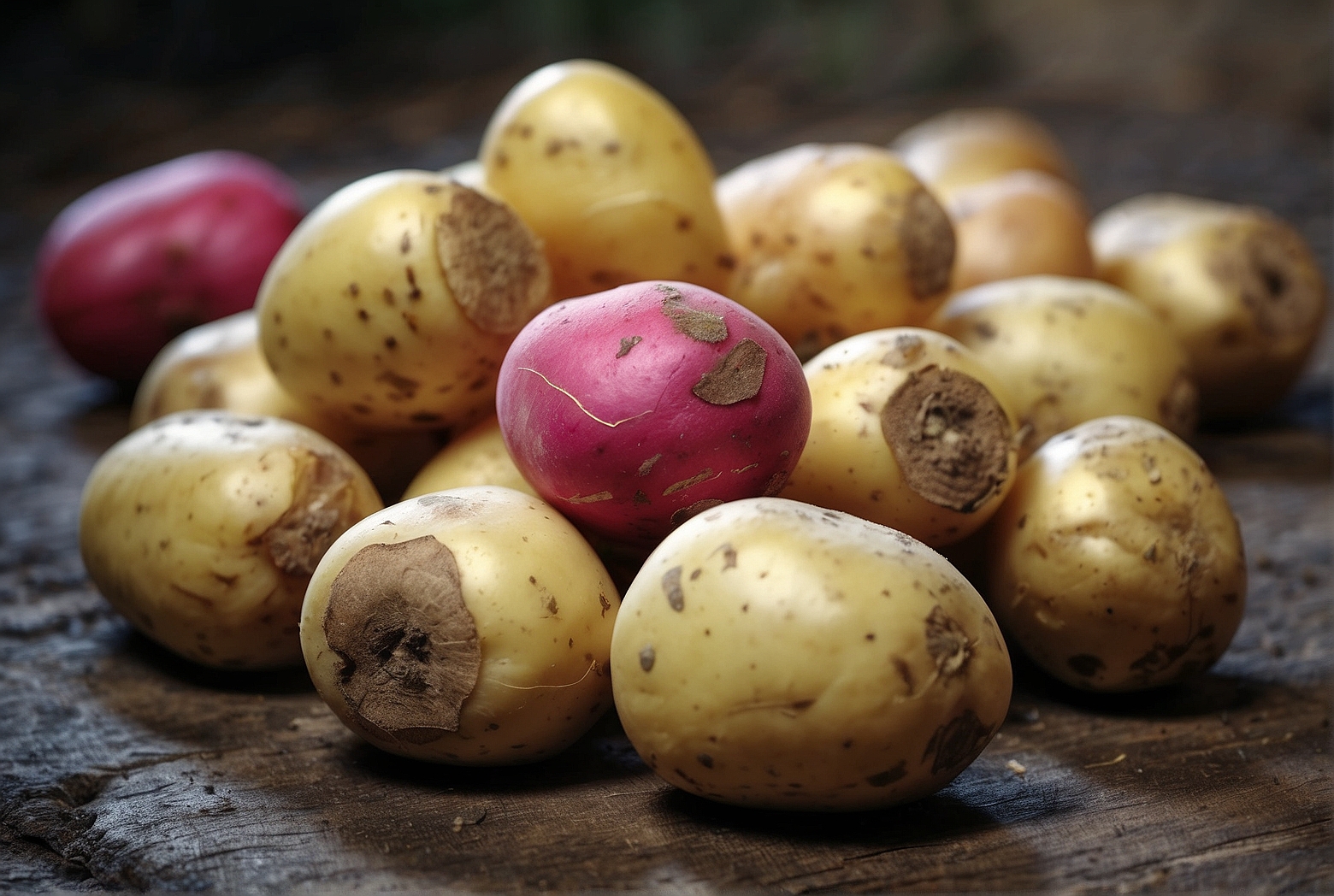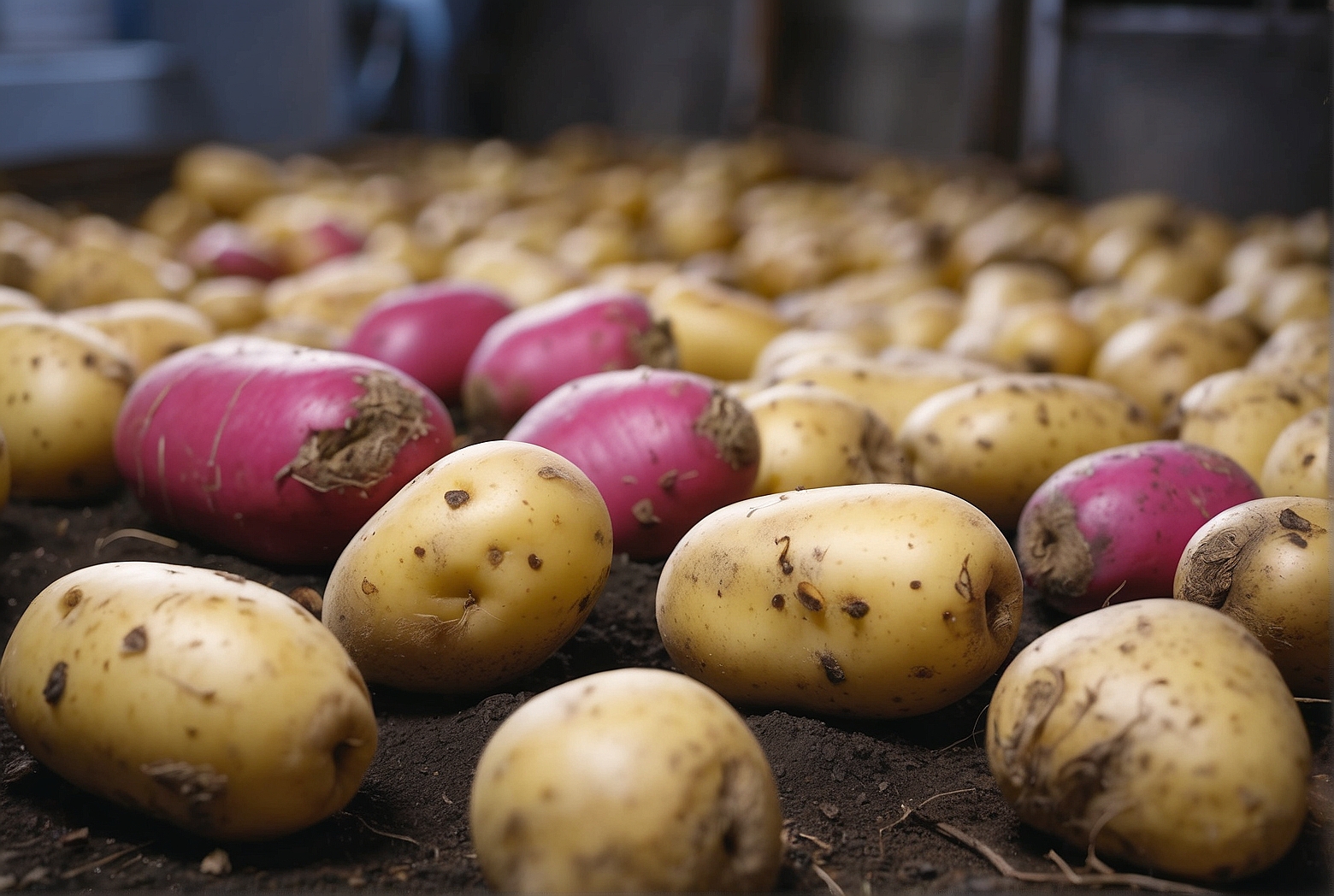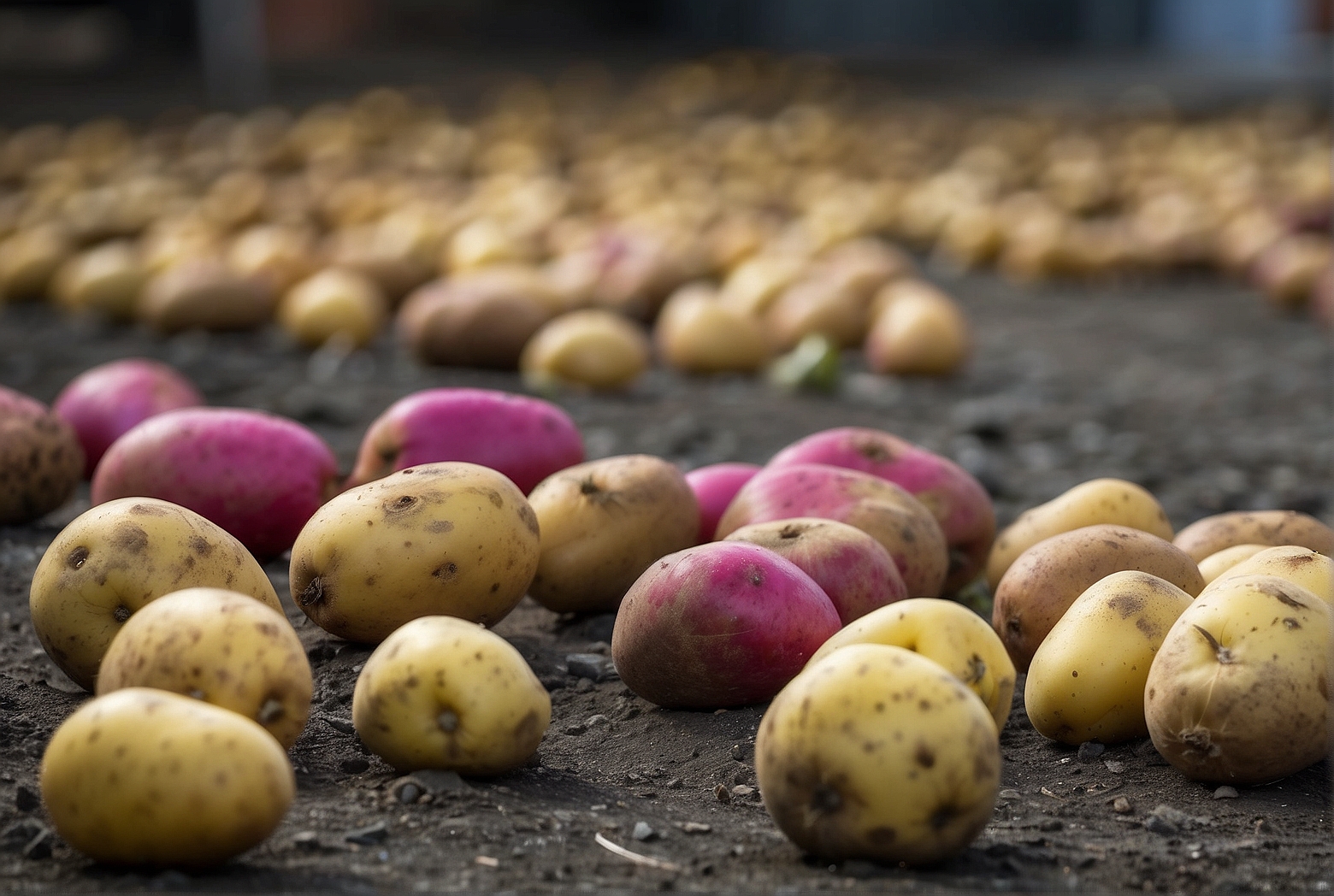Last Updated on April 5, 2024 by Tony Manhart
Potato enthusiasts rejoice! If you’ve been pondering the botanical nature of Yukon Gem potatoes, then this article is your one-stop shop for answers. Curiosity has undoubtedly struck, leading you to question whether these delectable tubers are determinate or indeterminate. Prepare to be enlightened as we unravel the mystery behind the growth patterns of Yukon Gem potatoes, and delve into their classification. Stay tuned for a fascinating exploration of these popular spuds that will leave you brimming with knowledge.
Introduction
Welcome to this comprehensive article on Yukon Gem potatoes! In this article, we will explore the background information about Yukon Gem potatoes and discuss the importance of knowing whether they are determinate or indeterminate. By understanding the growth habits of these potatoes, you will be able to make informed decisions about how to grow and care for them in your garden or farm.
Background Information on Yukon Gem Potatoes
Yukon Gem potatoes are a popular variety known for their exceptional flavor and creamy texture. They are a type of yellow-fleshed potato that originated in Canada. These potatoes are highly versatile and can be used in a variety of culinary applications, from mashed potatoes to roasted dishes.
Importance of Knowing Whether Yukon Gem Potatoes are Determinate or Indeterminate
Knowing whether Yukon Gem potatoes are determinate or indeterminate is crucial for planning and maximizing your potato crop. The growth habit of a potato plant determines how it will develop and produce tubers. By understanding the growth habit, you can implement appropriate practices such as staking, watering, and pruning, to optimize yield and quality. Let’s delve further into the characteristics of potato plants.

Potato Plants
Potato plants are herbaceous perennials that are grown as annuals due to their tuber formation. They belong to the Solanaceae family and are botanically known as Solanum tuberosum. These plants have a distinct appearance and exhibit different growth habits.
General Characteristics of Potato Plants
Potato plants typically have an upright growth habit with several stems emerging from the base of the plant. They have compound leaves that consist of multiple leaflets attached to a central stalk called the petiole. The leaves can vary in size and shape depending on the potato variety.
Types of Potato Growth Habits
Potato plants can be broadly classified into two categories based on their growth habits: determinate and indeterminate.
Differentiate Between Determinate and Indeterminate Varieties
Determinate potato varieties are characterized by a compact growth habit and a limited height. These plants usually stop growing once they reach a certain height and produce tubers all at once. In contrast, indeterminate potato varieties continue to grow throughout the season, producing tubers continuously over an extended period.

Now, let’s focus specifically on Yukon Gem potatoes and explore their distinct characteristics.
Yukon Gem Potatoes
Yukon Gem potatoes are highly regarded for their taste, texture, and versatility in the kitchen. Let’s take a closer look at their appearance, flavor, texture, and common culinary uses.
Overview of Yukon Gem Potatoes
Yukon Gem potatoes are an early-maturing variety that offers a smooth, thin, and light yellow skin. They have a vibrant yellow flesh, which is one of their defining features. These potatoes are known for maintaining their color during cooking, making them visually appealing in various dishes.
Appearance
Yukon Gem potatoes are medium-sized with a round to oval shape. Their skin is thin and delicate, making them easy to handle and peel. When harvested at the right time, these potatoes have a smooth and unblemished skin, adding to their overall appeal. Their attractive appearance makes them an excellent choice for both culinary and presentation purposes.
Flavor and Texture
The flavor profile of Yukon Gem potatoes is often described as buttery and slightly sweet. They have a creamy and smooth texture when cooked, making them perfect for mashing, baking, or steaming. The consistent texture and delicate taste of these potatoes make them suitable for a wide range of recipes, whether it’s a classic mashed potato dish or a flavorful potato salad.
Common Uses in Culinary Applications
Yukon Gem potatoes are incredibly versatile in the kitchen. Due to their creamy texture, they are ideal for making mashed potatoes, gratins, and purees. Additionally, their unique flavor pairs well with a variety of seasonings and ingredients, making them a great choice for roasting, steaming, or simmering. You can also use them in salads, as they hold their shape well when cooked, adding a delightful creaminess to the dish.
Now that we have explored the characteristics of Yukon Gem potatoes, let’s dive into the determinate and indeterminate growth habits to gain a better understanding.
Determinate vs. Indeterminate
Understanding the difference between determinate and indeterminate growth habits is essential for managing and maximizing the potential of your potato plants. Here, we will define these terms and discuss how to identify whether your Yukon Gem potatoes are determinate or indeterminate.
Definition of Determinate and Indeterminate Growth Habits
Determinate potato plants have a predetermined height and produce tubers all at once. Once they reach a specific height, their growth stops, and the plant focuses on maturing the tubers. On the other hand, indeterminate potato plants continue to grow throughout the season, producing tubers over an extended period.
Identification of Determinate Potato Plants
Determinate potato plants are characterized by their compact growth habit and limited height. They are often bushy and have a dense foliage. It is essential to know whether your Yukon Gem potatoes are determinate so that you can plan for their growth and harvest accordingly.
Identification of Indeterminate Potato Plants
Indeterminate potato plants, including some Yukon Gem varieties, display continuous growth throughout the growing season. These plants tend to be taller and have a more open and elongated appearance compared to determinate varieties. Identifying whether your Yukon Gem potatoes fall into the indeterminate category will help you take appropriate measures to support their growth and optimize yield.
As we explore the growth patterns specific to Yukon Gem potatoes, we will rely on research, studies, and observations from experts and potato growers.
Growth Patterns of Yukon Gem Potatoes
Understanding the growth patterns of Yukon Gem potatoes will provide valuable insights into their habits and behaviors. Here, we will explore the research and studies conducted on these potatoes, as well as observations from potato growers and experts.
Research and Studies on the Growth Habit of Yukon Gem Potatoes
Although specific research focusing solely on the growth habit of Yukon Gem potatoes might be limited, we can draw insights based on broader studies conducted on potato varieties. These studies have demonstrated that some Yukon Gem potatoes exhibit an indeterminate growth pattern.
Observations from Potato Growers and Experts
Potato growers and experts have observed that Yukon Gem potatoes, particularly certain strains or selections, display an indeterminate growth habit. These observations are based on practical experience and provide valuable guidance for cultivation and management techniques.
As we explore the factors influencing the growth habit of Yukon Gem potatoes, we will consider both genetic and environmental factors that impact their determinacy or indeterminacy.
Factors Influencing Growth Habit
The growth habit of Yukon Gem potatoes can be influenced by various factors, including genetics, environmental conditions, and cultural practices. Let’s explore how these factors can affect the determinacy or indeterminacy of potato plants.
Genetic Factors Affecting Growth Habit
The growth habit of potato plants, including Yukon Gem potatoes, is primarily determined by their genetic makeup. Variations in the genetics of different strains or selections can lead to differences in growth patterns. Breeders and researchers continue to study the genetic factors that contribute to the determinacy or indeterminacy of potato varieties, providing valuable insights for the farming community.
Environmental Factors Influencing Potato Plant Growth
Environmental conditions play a significant role in determining the growth habit of Yukon Gem potatoes. Factors such as temperature, day length, sunlight exposure, and soil fertility can influence the development and behavior of the plants. Paying attention to these environmental factors is crucial when aiming to maximize the potential of your potato crop.
Cultural Practices Impacting Determinacy or Indeterminacy
Certain cultural practices can also influence the growth habit of Yukon Gem potatoes. For example, providing appropriate support through staking or pruning can help manage the growth of indeterminate varieties. Additionally, adjusting irrigation and fertilization practices based on the growth habit can optimize tuber production and overall plant health. Adopting appropriate cultural practices is key to achieving successful potato cultivation.
Now that we have explored the various factors influencing the growth habit of Yukon Gem potatoes, let’s examine the benefits and drawbacks of both determinate and indeterminate growth habits.
Benefits and Drawbacks
Both determinate and indeterminate growth habits offer their own set of advantages and disadvantages for potato growers. Understanding these benefits and drawbacks will help you choose the right growth habit based on your specific needs and circumstances.
Advantages of Growing Determinate Potato Varieties
Determinate potato varieties, including some Yukon Gem strains, offer several advantages. Firstly, their compact growth habit makes them suitable for container gardening or limited space. Secondly, since determinate varieties produce tubers all at once, they are ideal for those aiming for a single harvest, simplifying the harvesting process. Additionally, their smaller size can make them easier to manage and harvest, especially in home gardens.
Advantages of Growing Indeterminate Potato Varieties
Indeterminate potato varieties, including certain Yukon Gem selections, have their own unique advantages. The continuous growth of indeterminate plants allows for a prolonged harvest period, meaning you can enjoy fresh potatoes over an extended period. Moreover, since indeterminate varieties keep producing tubers, they can be an excellent choice if you prefer a steady supply of potatoes for culinary purposes.
Disadvantages of Each Growth Habit
Determinate and indeterminate growth habits also come with a set of disadvantages. Determinate varieties produce tubers all at once, which can lead to a higher risk of loss if the tubers are not harvested promptly or if weather conditions are unfavorable during harvesting. Conversely, the continuous growth of indeterminate varieties can make them more susceptible to diseases, pests, and environmental factors that may limit the overall yield.
Now that we have explored the benefits and drawbacks of both determinate and indeterminate growth habits, let’s move on to some gardening tips specifically for growing Yukon Gem potatoes.
Gardening Tips for Yukon Gem Potatoes
To achieve the best results when growing Yukon Gem potatoes, it’s essential to provide them with optimal growing conditions and implement effective gardening practices. Here are some tips to help you cultivate healthy and productive Yukon Gem potato plants.
Ideal Growing Conditions for Yukon Gem Potatoes
Yukon Gem potatoes thrive in well-drained, fertile soils with a pH level between 5.0 and 6.5. Ensure they receive at least six to eight hours of direct sunlight daily. Plant them in an area with good air circulation to prevent the buildup of moisture and reduce the risk of diseases. Avoid waterlogged conditions, as excessively wet soil can lead to rot and other issues.
Pruning and Staking Techniques
If you are growing indeterminate Yukon Gem potatoes, providing proper support through staking or pruning can help manage their growth. As the plants grow taller, gently insert stakes into the soil beside the plants and use twine, soft ties, or tomato cages to support the stems and prevent them from falling over. Pruning some of the excessive foliage can also redirect the plant’s energy toward tuber development.
Fertilization and Watering Requirements
Yukon Gem potatoes benefit from regular and balanced fertilization. Apply a balanced fertilizer rich in essential nutrients, such as nitrogen, phosphorus, and potassium, before planting and periodically throughout the growing season. Monitor soil moisture and provide consistent watering, ensuring the soil remains evenly moist. Avoid overwatering, as it can lead to rot and adversely affect tuber development.
Now that we have covered the gardening tips, let’s move on to harvesting and storage guidelines for Yukon Gem potatoes.
Harvesting and Storage
Knowing when, how, and where to harvest your Yukon Gem potatoes is vital to ensure optimal flavor, texture, and longevity. Here, we will discuss the signs of maturity, proper harvesting techniques, and best practices for potato storage.
Signs of Maturity for Yukon Gem Potatoes
To determine the maturity of Yukon Gem potatoes, closely examine the plants and take note of the foliage. As the plants near maturity, the foliage starts to turn yellow and die back. Additionally, the skin of mature potatoes becomes firm and set, offering resistance when gently pressed with your thumb. The potatoes should have reached their desired size, and it’s essential to avoid over-maturity to maintain their quality.
Proper Harvesting Techniques
When harvesting Yukon Gem potatoes, use a garden fork or shovel to gently loosen the soil and lift the plants from underneath. Be careful not to damage the tubers during the process. After lifting the plants, remove excess soil and allow the potatoes to dry on the surface for a few hours, ensuring they are not exposed to direct sunlight to prevent greening.
Best Practices for Potato Storage
Proper storage conditions are crucial to preserving the quality and flavor of your harvested Yukon Gem potatoes. Cure the potatoes by placing them in a well-ventilated, cool, and dark space, ideally around 50-60°F (10-15°C) for a couple of weeks. After curing, store the potatoes in a dark and cool location, such as a root cellar or a basement, to maintain their freshness. Avoid storing them with fruits such as apples, as ethylene gas emitted by fruits can cause potatoes to sprout.
In conclusion, we have explored the determinate and indeterminate characteristics of Yukon Gem potatoes in detail. Understanding their growth habits, appearance, flavor, and common uses will enable you to make informed decisions when cultivating these delightful potatoes. Remember to consider the factors influencing their growth, embrace appropriate gardening techniques, and implement the recommended harvesting and storage practices to optimize your yield and enjoy the delicious results of your efforts. Happy gardening and potato growing!
Tony Manhart is a passionate gardener who has been tending to gardens for over 20 years. He takes pride in creating beautiful outdoor spaces with plants, trees, and shrubs that can thrive in any environment. He loves to share his knowledge with others and has taught classes on gardening basics and advanced techniques. He is committed to sustainability, using natural and organic methods to create and maintain gardens. He also works with local organizations to create green spaces for communities. When he’s not gardening, Tony enjoys hiking, reading, and spending time with his family.


